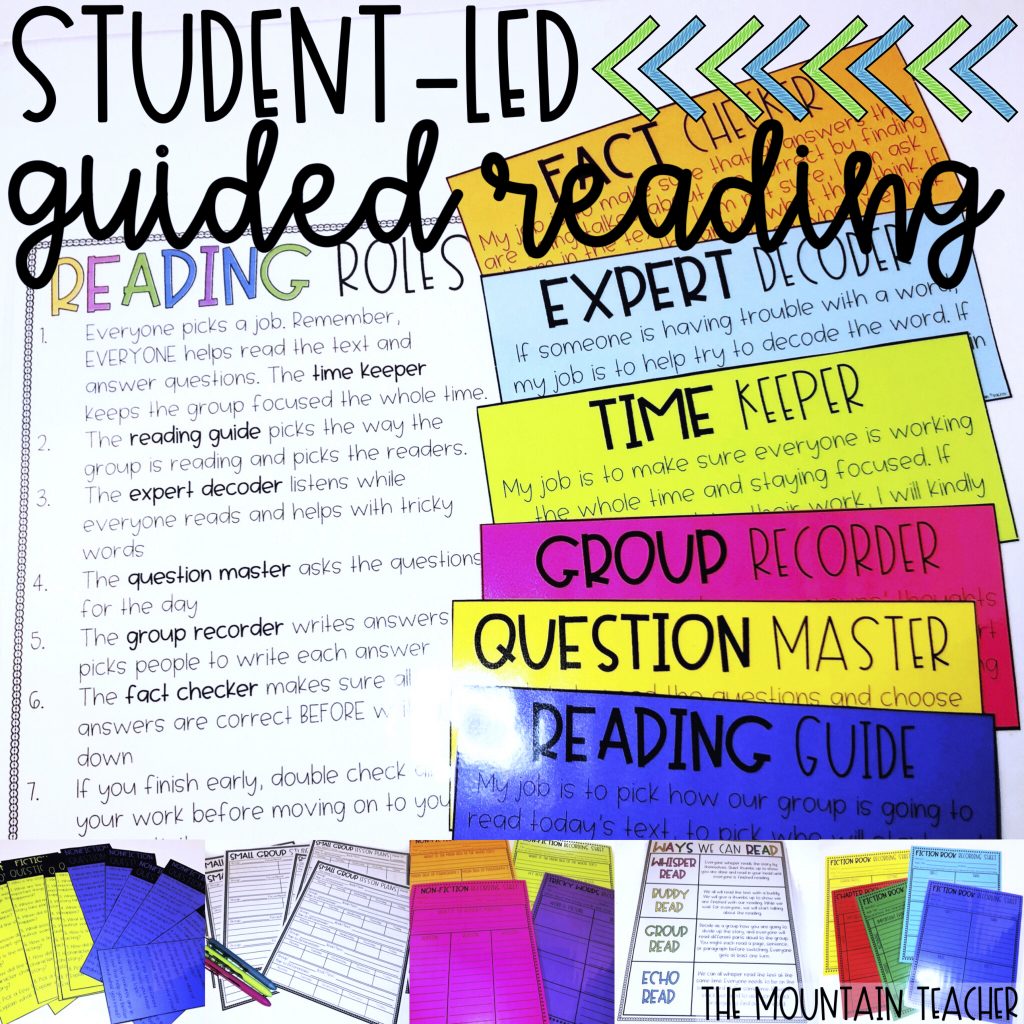How to Plan Guided Reading Groups that Actually Work

Structuring your guided reading groups can be a tricky feat, even for the most experienced teacher. Typically, teachers only have between 45 minutes to an hour to see 25-30 students. It quickly becomes difficult to maximize time. Read on for some tried and true tips that worked for me and helped all of my students achieve their end of year goals.
HOW MANY GROUPS:
To begin, you will have to make your groups. Depending on how many students you have, I tried to have NO MORE than 4 reading groups. This could mean having as many as 8-9 kids in my (higher) groups. For smaller class sizes, you can have as few as 3 groups. I would stick to having anywhere between 4-8 students in a group (ideally). By sticking to no more than 4 groups, you can best optimize your time.
HOW TO MAKE GROUPS:

Typically, I had 3 focus points for creating groups. The first were my students that struggled the most. They were my phonics centered group. Next, I had a fluency group. These are my students that have a stronger grasp on phonics, but need assistance with fluency skills. Next, I would separate my on-level and above-level students into two separate comprehension heavy groups. These groups tended to be bigger, but are also more independent.
I used a combination of DIBELS, NWEA MAP scores, a running record or guided reading level and other common assessment data to triangulate my groups. My groups were also flexible, and I most often would make changes at each quarter.
TIMING:
Timing is everything. No matter what, I like to see every group every day. Take whatever time you have allotted for guided reading, and divide that by 4. Ideally, you will have AT LEAST 15 minutes with each group, but it can also be accomplished in as little as 10 minutes. The most important thing is seeing each group each day. While it can be hard, setting a timer can help hold you and your students accountable for your time together. Even if you run out of time every day, you will eventually get to a point where you are making every minute worth it.
CONTENT:
While this will vary based on grade level, here is a breakdown of what I would do each day.

1-2 minute: Phonics Warm Up: This would be the same each day. We would either play a game or do a center all together. Students would need instruction on this to start, but would quickly become independent at these activities as the year progressed.
1 minute: Preview/Comprehension Review: Whatever the WHOLE GROUP comprehension skill is is what the focus of your guided reading group should be. For example, if you are learning about main idea/key details in whole group, pick the SAME SKILL in small group. Review it quickly and talk about how you will be relating it to the text.

5-7 minutes: Fluency Practice/Cold Read: This is the bulk of your lesson. Students will practice various ways of reading the text that you are working with that week. Some options include: whisper reading to self, round robin reading, partner reading, reading in their heads, choral reading, echo reading, etc. During this time, you should be listening to each student read at least once a day. If a student is stuck on a word, be sure to refer to phonics strategies or reading strategies to help them tackle a word, rather than just providing the word to them. This is essential to build strong readers.

1-3 minutes: Comprehension: During the closing of your mini lesson, allow students to ORALLY discuss the comprehension skill that you have worked on. If you are using a graphic organizer in whole group, you can model how to fill it out using the small group text. If you want students to keep a paper trail, give this to them as work to do AFTER leaving your table. Do not use table time for them to be filling out graphic organizers.
OPTIONAL 3-5 minutes: Remediation/Extension: If you have identified an area that the whole group either needs to work on or can benefit from extending with, this is a great time to fill in those gaps. I usually do this using a fun game or center.
MATERIAL:
Remember, guided reading is still supposed to be GRADE LEVEL material. This means, no matter how much a group seems to be struggling, you need to be exposing them at minimum to the grade level text. If you are not exposing them to this text during guided reading, they are never learning to bridge the gap and read this text on their own. Even if it is a struggle, try echo reading, or other strategies to help bridge that gap for them. Lower level text should be reserved for intervention or special education service time only.
FLEXIBILITY:

While this worked great for my second graders, adjustments did need to be made throughout the year. Be sure to give students grace, and be flexible enough to move them up or down a group as needed.
Remember to also give yourself grace. Guided reading time can be difficult to establish, but is when many teachers will claim that “the magic happens!”
Hop over to my blog post on setting up your reading workshops to check out ideas for how to keep the rest of your class independent while you are working with a small group. Looking to switch it up for a more independent group? Read about student-led small groups or student led guided workshops here.
Drop any questions or suggestions below!
